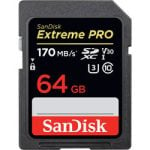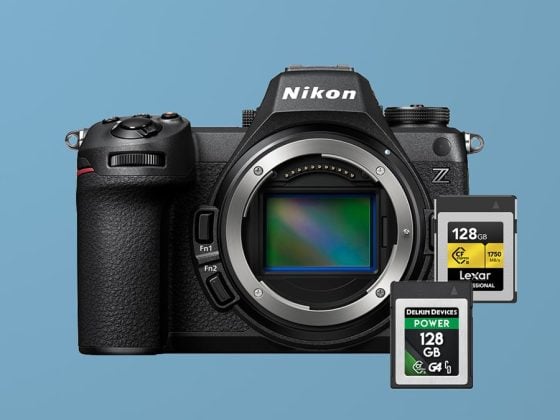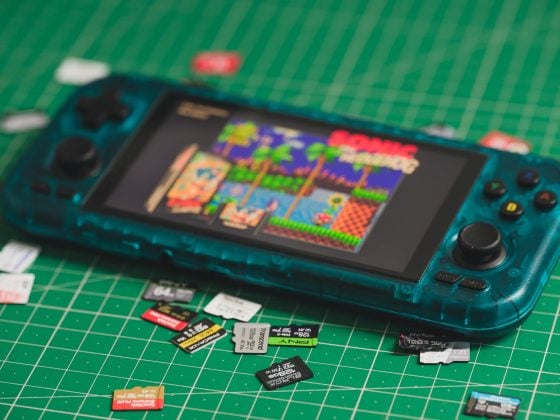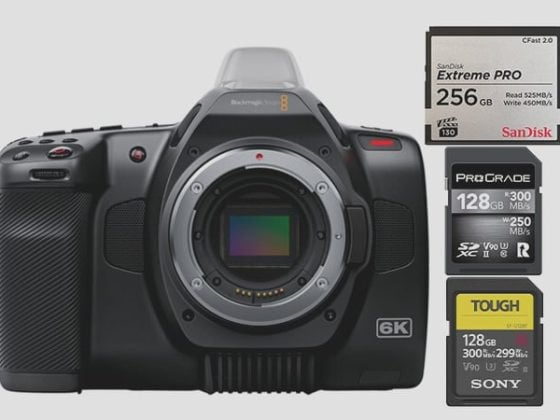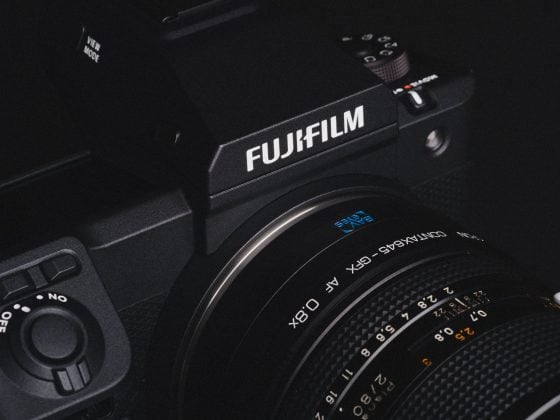The RX10 IV is an old camera that was launched in 2017, and it has a single SD card slot that supports UHS-I speed class. You may still own this camera or want to buy one second-hand, and you may need some advice on the best memory cards. This guide will cover some of the essentials and suggest the best memory cards for the Sony RX10 IV.
Recommended Memory Cards Sony RX10 IV
The RX10 IV has a single SD card slot that supports UHS-I speed class. Sony cameras from this time also had a bitrate of about 100Mbps, which means you need about 12.5MB/s for recording a lot of videos. Make sure you get a card that has at least a U3 or V30 speed class to support this.
The camera can use up to 128GB cards, but some users have used bigger cards without problems. As a safety measure, I’d suggest a 64-128GB memory card just to avoid any compatibility issues.
These tips should help you find some of the best cards for this camera now.
| Recommended SD Cards | Speed Class | USB Write | USB Read | Links | |
|---|---|---|---|---|---|
| SD UHS-II V60 | UHS-II | Hide | Hide | ||
| Sony E v60 256GB | UHS-II | https://geni.us/ARfXs | Amazon / B&H | ||
| UHS-I U3 | UHS-I | Hide | Hide | ||
| Sandisk Extreme Pro 32/64/128GB | UHS-I | 144 | 172 | https://geni.us/AjId | Amazon / B&H |
| Kingston CanvasGo! 128/256/512GB | UHS-I | 124 | 161 | https://geni.us/oJU7q | B&H |
| Sony 95 | UHS-I | 81 | 90 | https://geni.us/wnX8rG | Amazon |
| Delkin Advantage 32-1TB | UHS-I | 77 | 93 | https://geni.us/HlTWWVh | Amazon / B&H |
Best Memory Cards Sony RX10 IV | The Speed Test
The Sony RX10 IV is an awesome camera that had the first fast buffer in a Sony prosumer body. Before, only the Sony A7rIII and the Sony A9 had this feature.
This speed test shows how quickly each memory card works in the Sony RX10 IV. Tests are done using RAW at ISO 100 with a shutter of 1/100 in high continuous bursts.
USB 3.0 speeds are measured with Crystal Disk in Windows 10. These tests are old now, but I’ll keep them here so you can see how this camera’s buffer does.
You can also check out this guide – memory cards for Sony, to see how other cameras are performing, or, see the latest SD memory card benchmarks.
| Memory Cards | USB 3.0 Read | USB 3.0 Write | Sony RX10 IV |
| UHS-II | |||
| Delkin V90 | 271.4 MB/s | 231.3 MB/s | 60.75 MB/s |
| Sony G | 269.3 MB/s | 234.5 MB/s | 60.54 MB/s |
| Toshiba Exceria Pro | 258.8 MB/s | 226.5 MB/s | 60.18 MB/s |
| Transcend | 290.2 MB/s | 182.1 MB/s | 60.18 MB/s |
| Lexar 2000x | 272.7 MB/s | 244.5 MB/s | 60.10 MB/s |
| Fujifilm Elite II | 294.0 MB/s | 181.6 MB/s | 59.68 MB/s |
| Adata V90 | 256.5 MB/s | 231.7 MB/s | 59.14 MB/s |
| Sandisk Extreme Pro 300 | 273.9 MB/s | 238.9 MB/s | 59.02 MB/s |
| Sony M | 253.2 MB/s | 91.62 MB/s | 58.69 MB/s |
| Delkin 1900X | 273.3 MB/s | 97.3 MB/s | 58.42 MB/s |
| Lexar 1000x | 153.4 MB/s | 84.30 MB/s | 55.92 MB/s |
| Sandisk Extreme Pro 280 | 260.5 MB/s | 214.8 MB/s | 38.43 MB/s |
| UHS-I | |||
| Sandisk Extreme Pro U3 | 98.6 MB/s | 90.8 MB/s | 60.43 MB/s |
| Kingston U3 | 98.1 MB/s | 90.4 MB/s | 58.81 MB/s |
| Samsung Pro U3 | 97.7 MB/s | 78.6 MB/s | 58.17 MB/s |
| Samsung Pro+ U3 | 97.5 MB/s | 87.3 MB/s | 58.12 MB/s |
| Samsung Pro U1 | 96.3 MB/s | 82.2 MB/s | 57.70 MB/s |
| Delkin 633x U3 | 98.3 MB/s | 88.7 MB/s | 56.91 MB/s |
| Transcend U3 | 96.7 MB/s | 84.9 MB/s | 54.82 MB/s |
| Sony U3 – Old Model | 96.5 MB/s | 84.5 MB/s | 54.18 MB/s |
| Sandisk Extreme Plus U3 | 99.0 MB/s | 64.4 MB/s | 53.78 MB/s |
| PNY Elite Performance U3 | 96.5 MB/s | 66.1 MB/s | 50.26 MB/s |
| Lexar 633x U3 | 93.3 MB/s | 67.3 MB/s | 49.73 MB/s |
| Sony U3 – New Model | 96.7 MB/s | 56.2 MB/s | 48.15 MB/s |
| Lexar 600x U1 | 95.4 MB/s | 64.8 MB/s | 47.19 MB/s |
| PNY Elite Performance U1 | 96.5 MB/s | 66.5 MB/s | 46.46 MB/s |
| Sandisk Extreme U3 | 72.43 MB/s | 54.1 MB/s | 46.32 MB/s |
| Sandisk Ultra U1 | 99.3 MB/s | 36.1 MB/s | 24.83 MB/s |
| Samsung U1 EVO | 47.7 MB/s | 27.3 MB/s | 20.68 MB/s |
Sony RX10 IV Stats
Sensor: 20.1MP 1″ Exmor RS BSI CMOS Sensor
Video: 4K30 / 1080p at 960 fps
Continuous Shooting: 24 fps
Estimated Buffer Size: 2 GB
Memory Card Capacity: 128GB
RAW Shots Until Buffer Fills: 115
Time To Clear Buffer: 32 seconds
Must-Have Accessories Sony RX10 IV
Frequently Asked Questions
A list of some topics that hopefully will answer any questions you have.
Should I use USH-I or UHS-II and what’s the difference?
The Sony RX10 IV cannot use the full speed of UHS-II memory cards, so they are a waste of money for this camera. You should buy UHS-I memory cards for the Sony RX10 IV instead.
What do all the numbers and letters on the memory cards mean?
The most important numbers to look for are U1 or U3. The Sony RX10 IV needs U3 memory cards for 4K video recording. However, not all SD memory cards are compatible with 4K video. Some Samsung cards have problems with Sony cameras and you should stay away from them.
To learn more see the ultimate guide to memory cards.
What size memory card do I need?
Between 64GB and 128GB will be great for this camera.
Best Memory Cards Sony RX10 IV | Bottom Line
The Sony RX10 IV is an amazing camera, even though it was released in 2017. It has a 20.1MP 1-inch sensor, a 24-600mm f/2.4-4 zoom lens, and 4K video recording. It also has a fast and accurate autofocus system, a tilting touchscreen, and a large buffer. I’ve tried most of the RX10 cameras and the IV was the only one that impressed me. If you pair it with a fast SD memory card like the Sandisk Extreme Pro, you can handle any shooting scenario.
| **This website contains affiliate links. We will earn a small commission on purchases made through these links. Some of the links used in these articles will direct you to Amazon. As an Amazon Associate, I earn from qualifying purchases. |

